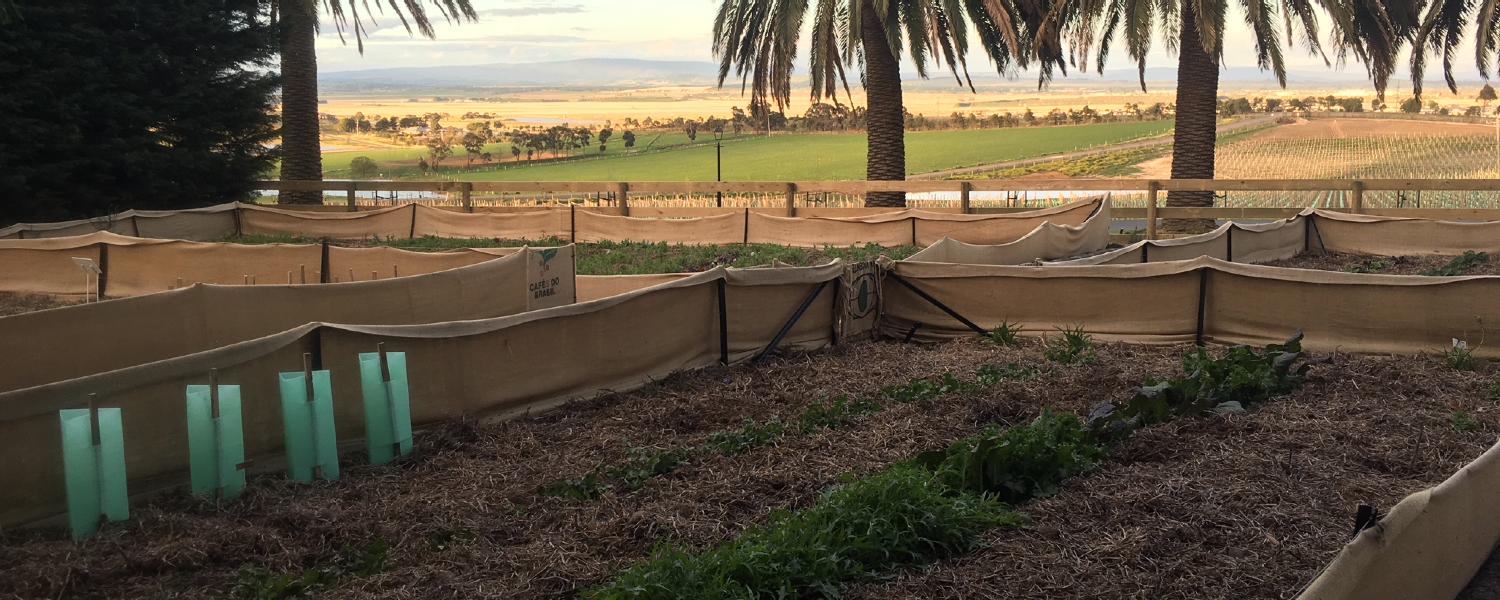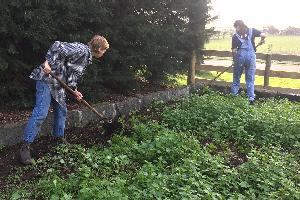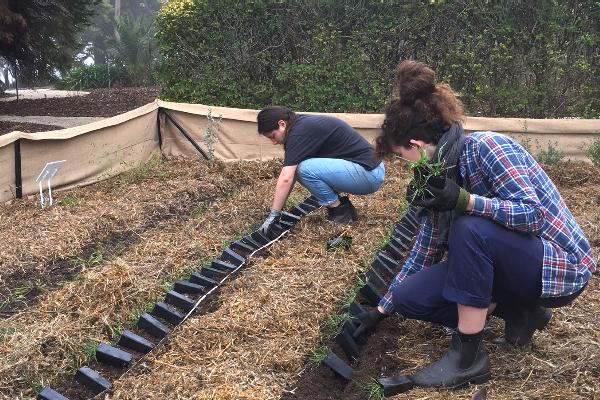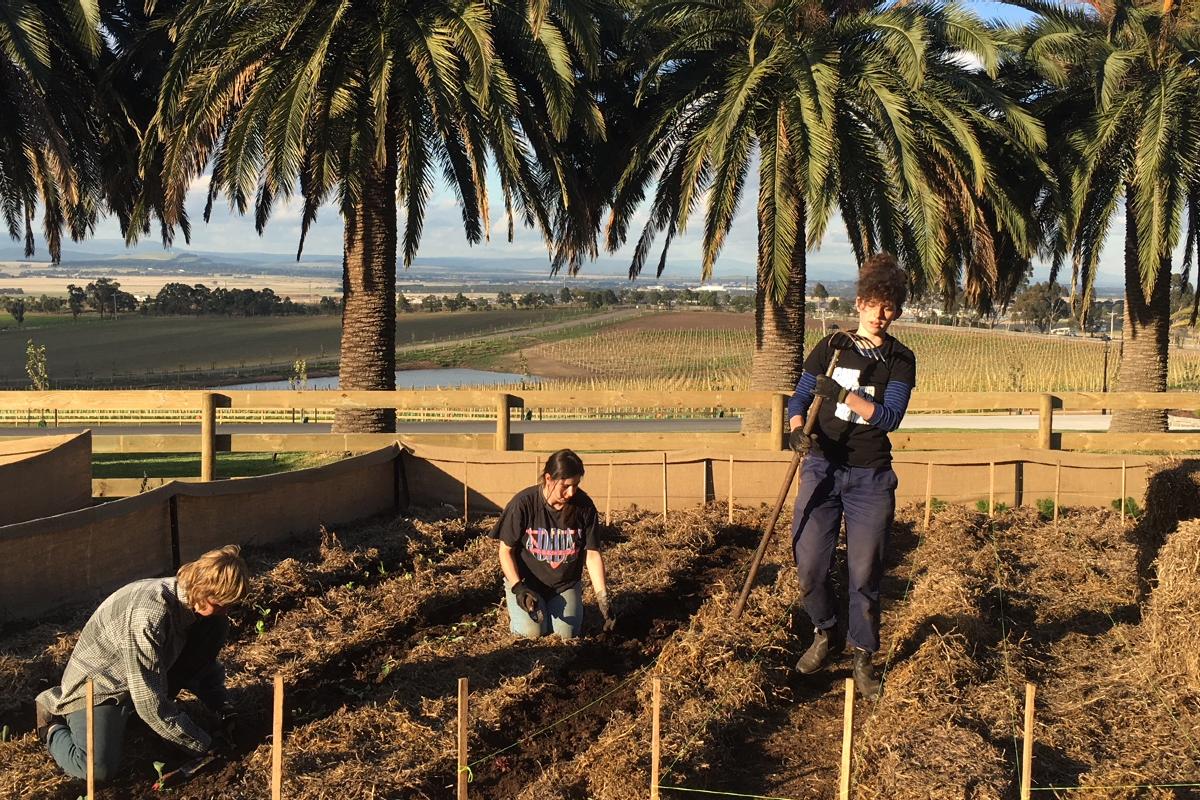
Project
Kitchen garden
Mickleham
In 2018, Karen was asked to design and install a kitchen garden as part of the refurbishment of Marnong, an 1850’s property in Mickleham, in the the outer north of Melbourne. The redevelopment has included setting up a new restaurant, led by head chef Matt Coates, and the garden has been designed for the kitchen staff to forage from to supplement their seasonal menu.

GARDEN TRANSFORMATION
Retaining the existing bluestone edging, weeds were removed and the soil rejuvenated, to ready the site for planting. The four large garden beds are approximately 100 m2, and have been pretected from the prevailing winds and resident rabbits with a short term fence of hessian. For easier maintenance, a range of herbs and edible flowers have been selected, as well as a small range of hardy annual vegetables.
Edible native plants
Karen’s design for this garden includes an entire garden bed of Australian native food plants, including favourites like lemon myrtle and finger limes, and lesser known plants such as strawberry gum, cinnamon myrtle and midyum and dianella berries. The garden is also planted with native tubers of bulbine lily and of course the iconic yam daisy, also called myrnong or marnong, after which the property was named.
Below left, Sally has just planted the lemon myrtles, and below right, Charlotte and Rita are planting the yam daisies.



Yam Daisy
Yam daisies Microseris lanceolata were once widespread on the plains around Melbourne, and this property was named after them. They were nurtured and and harvested by indigenous Australian women for thousands of years, turning over the soil with digging sticks, and were a major food source. Sadly this plentiful crop was destroyed by grazing sheep only a few years after they were introduced to this area and others, and the soil was compacted by their hooves. Thankfully there are keen gardeners working to return yam daisies to the environment, and also those working to develop yam daisies as a sustainable crop, which hopefully will also benefit indigenous Australians.
Edible flowers
Edible flowers not only bring colour and life to a kitchen garden and provide food for beneficial insects, but can be used to bring colour and excitement from the garden onto the plate.
Below left is a baby carnation and below right is an agastache plant. Both plants flower over a long period and have edible flowers that can be used as colourful garnishes. Other edible flowers in this garden include nasturtiums, calendula, pinepple sage, native violets and daylilies.




Perennial herbs
This garden includes a range of perennial herbs for use by the chefs. Tea herbs include apple mint, peppermint, spearmint, lemon thyme and lemon balm. Rosemary, olive herb, thyme, marjoram and oregano are all available for Mediterranean dishes. More unusual herbs include green pepper basil, lemon sorrel and orange thyme

